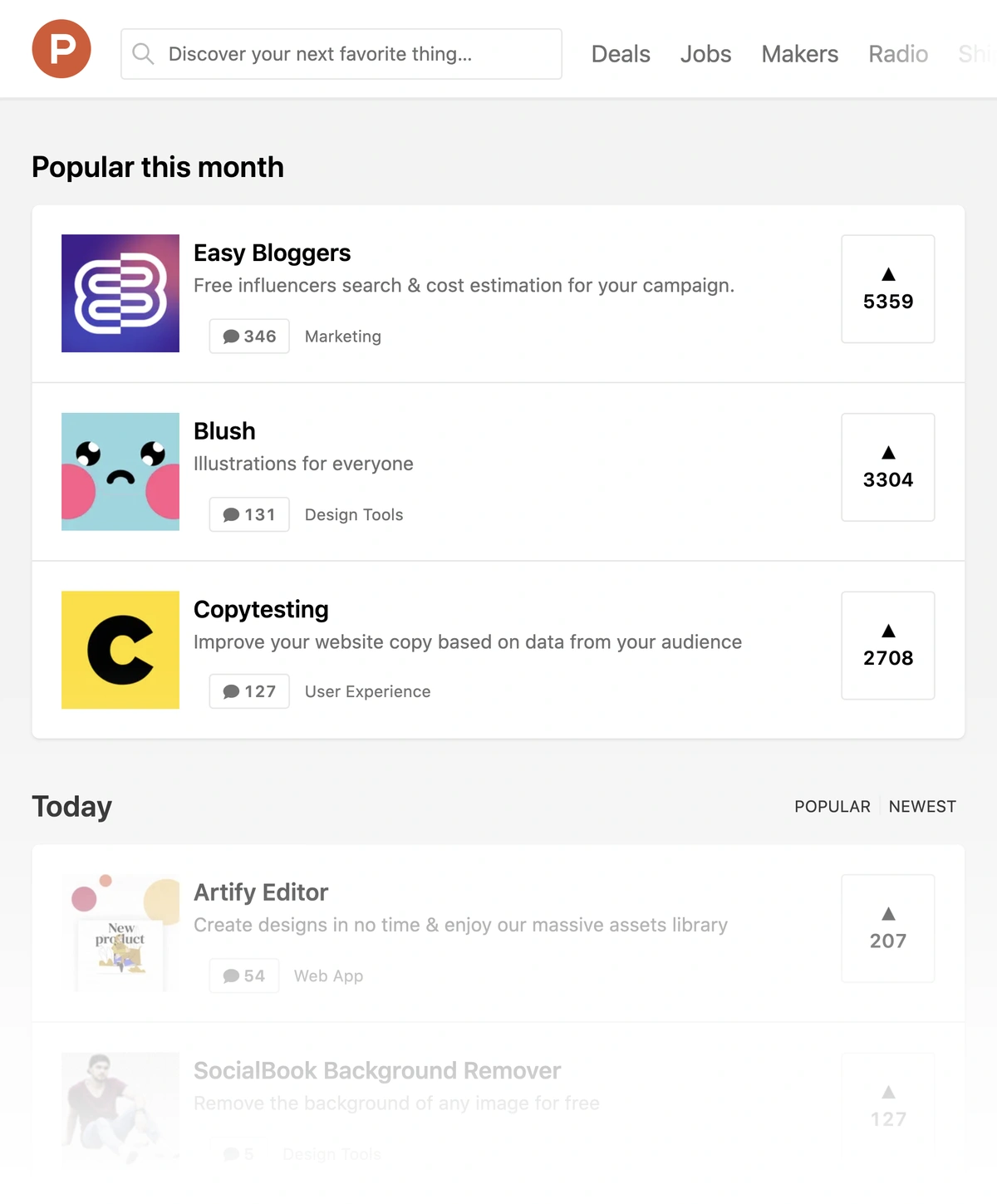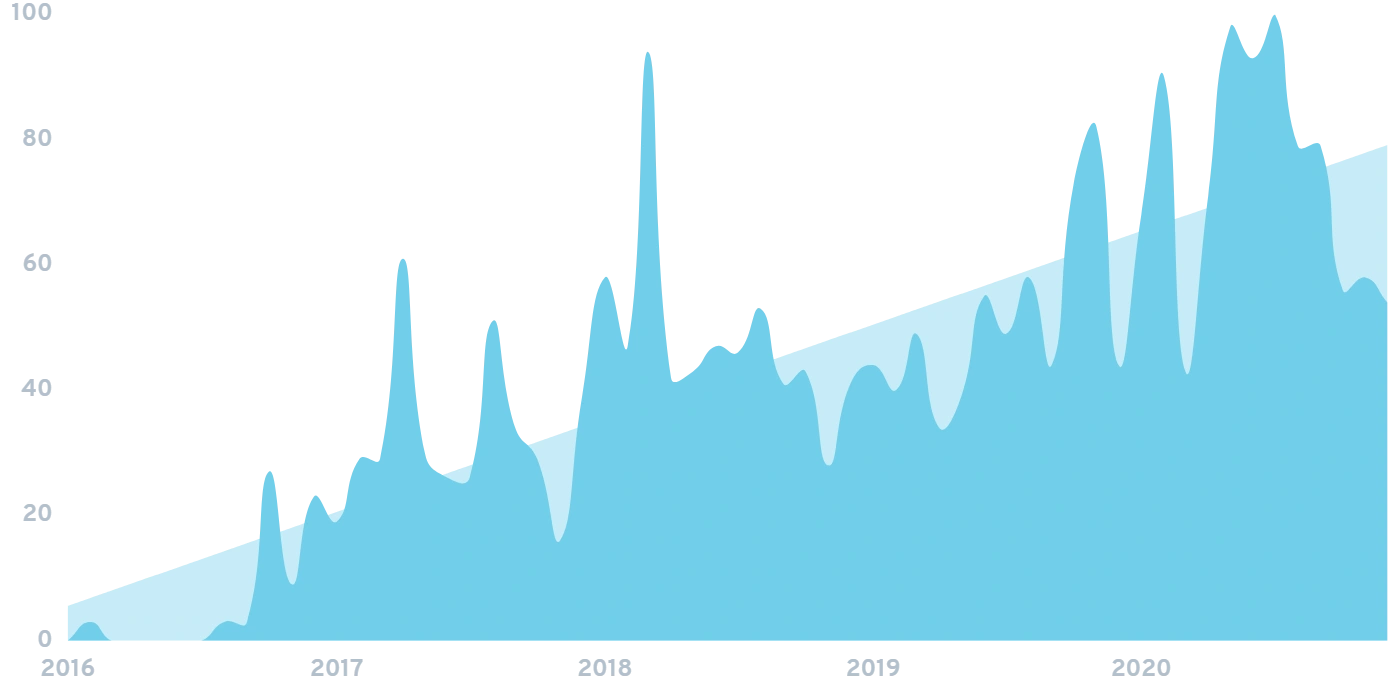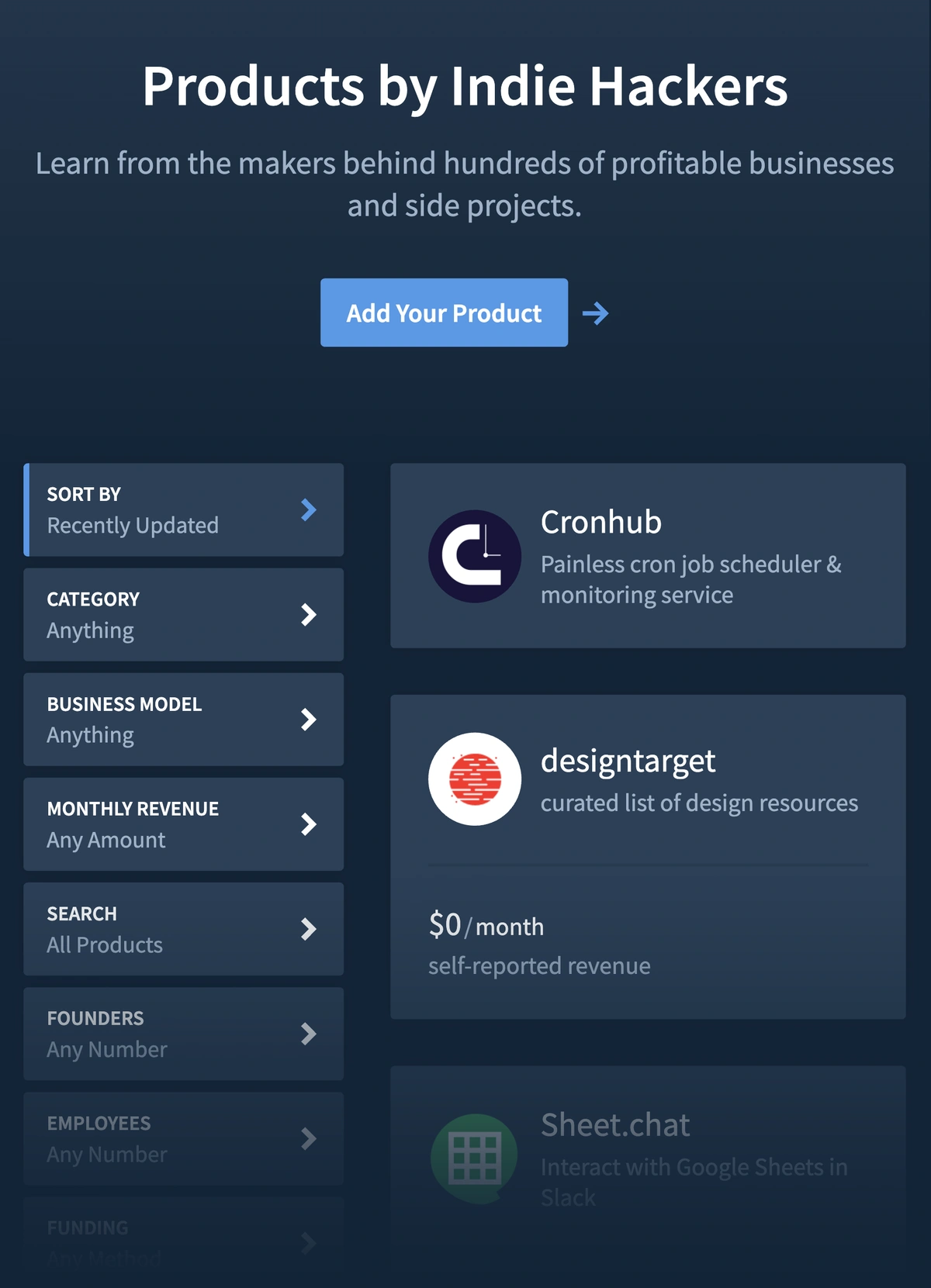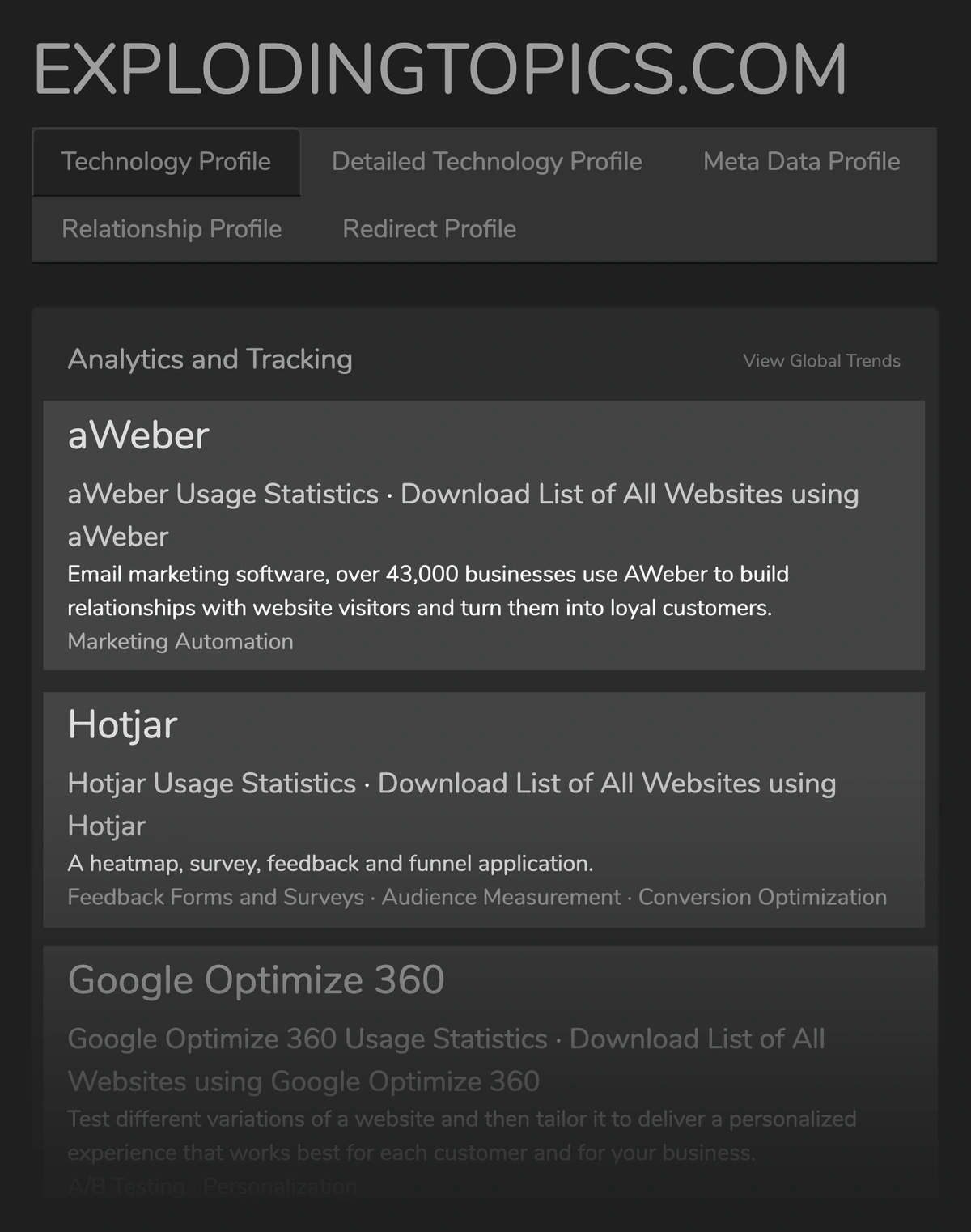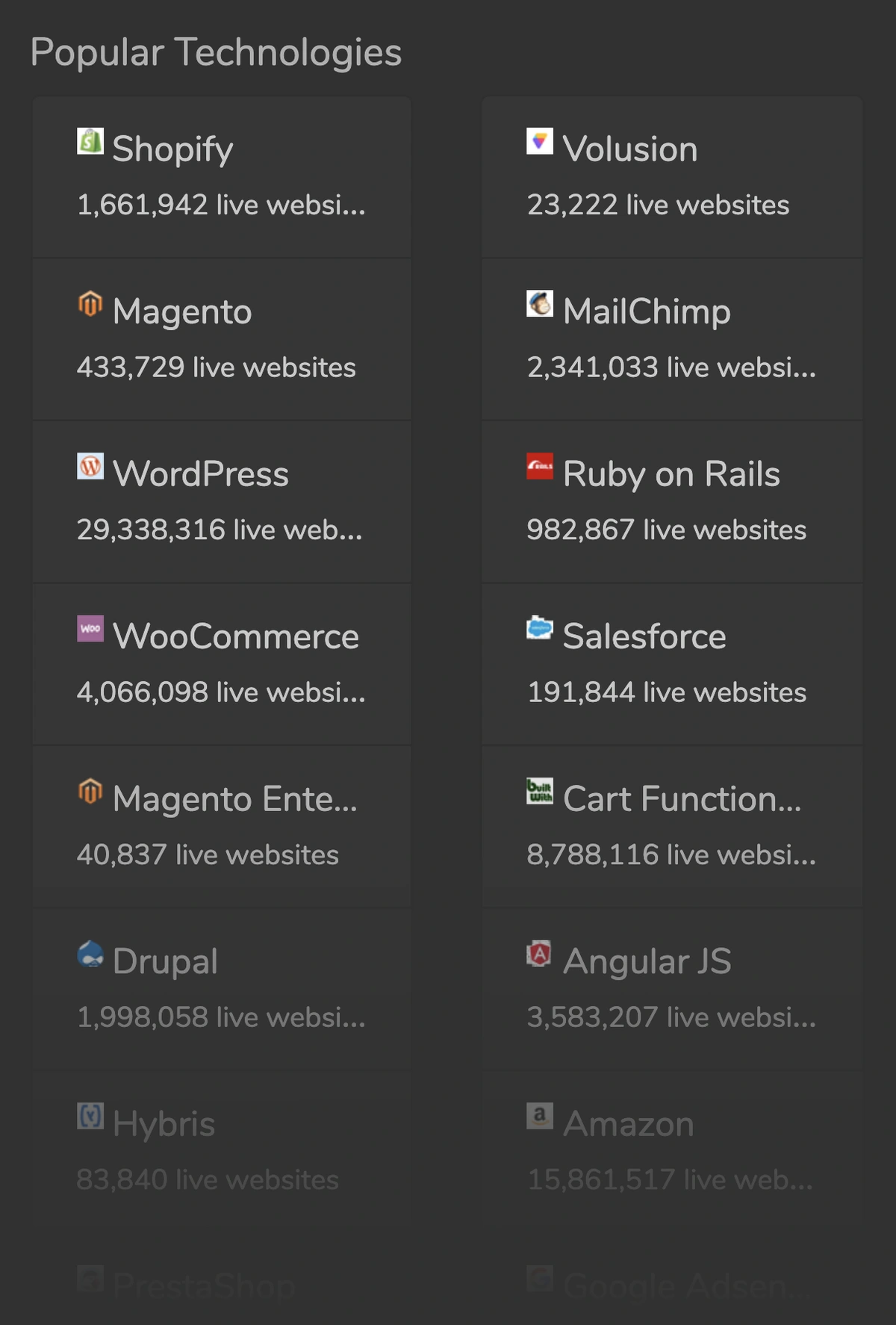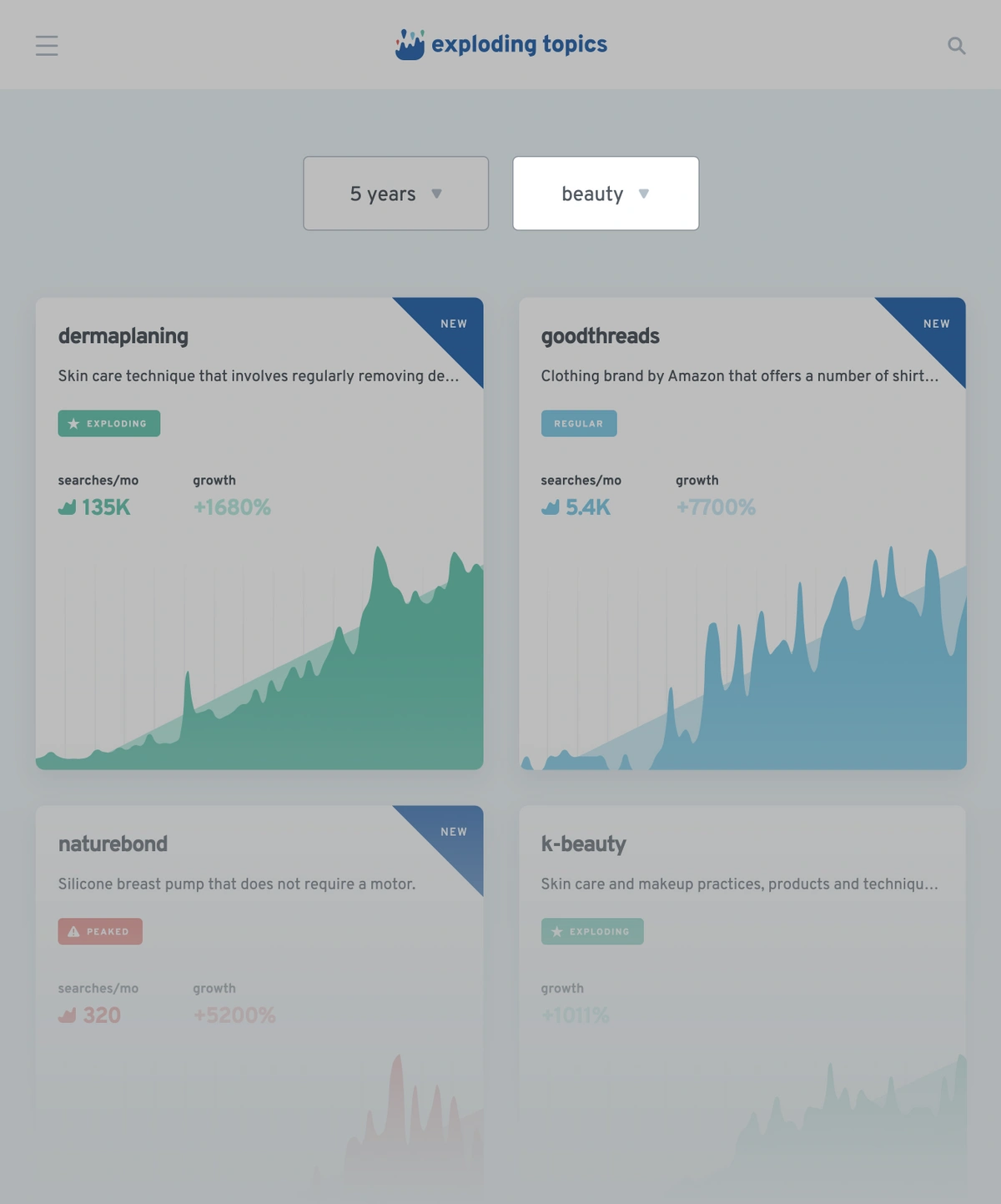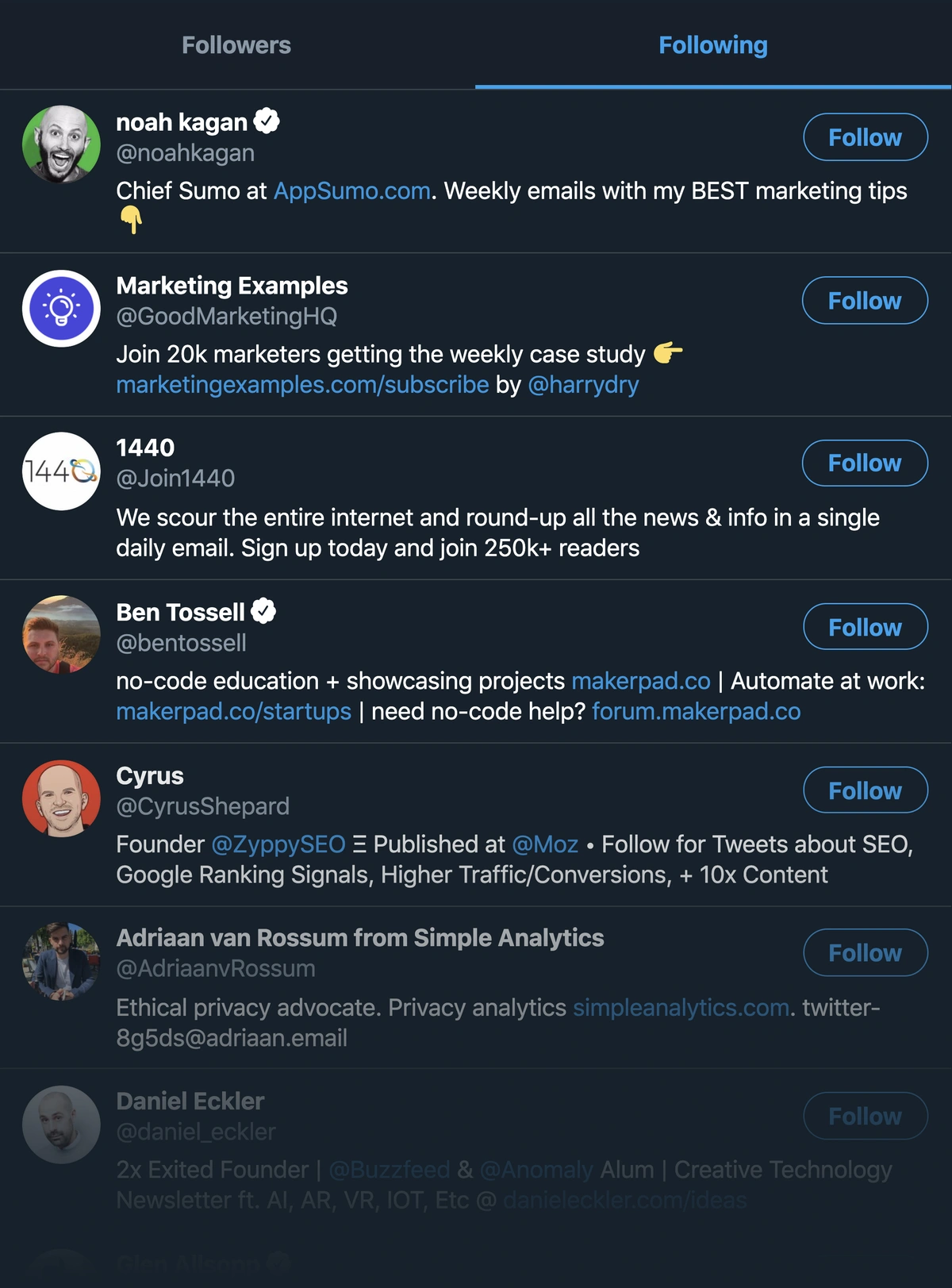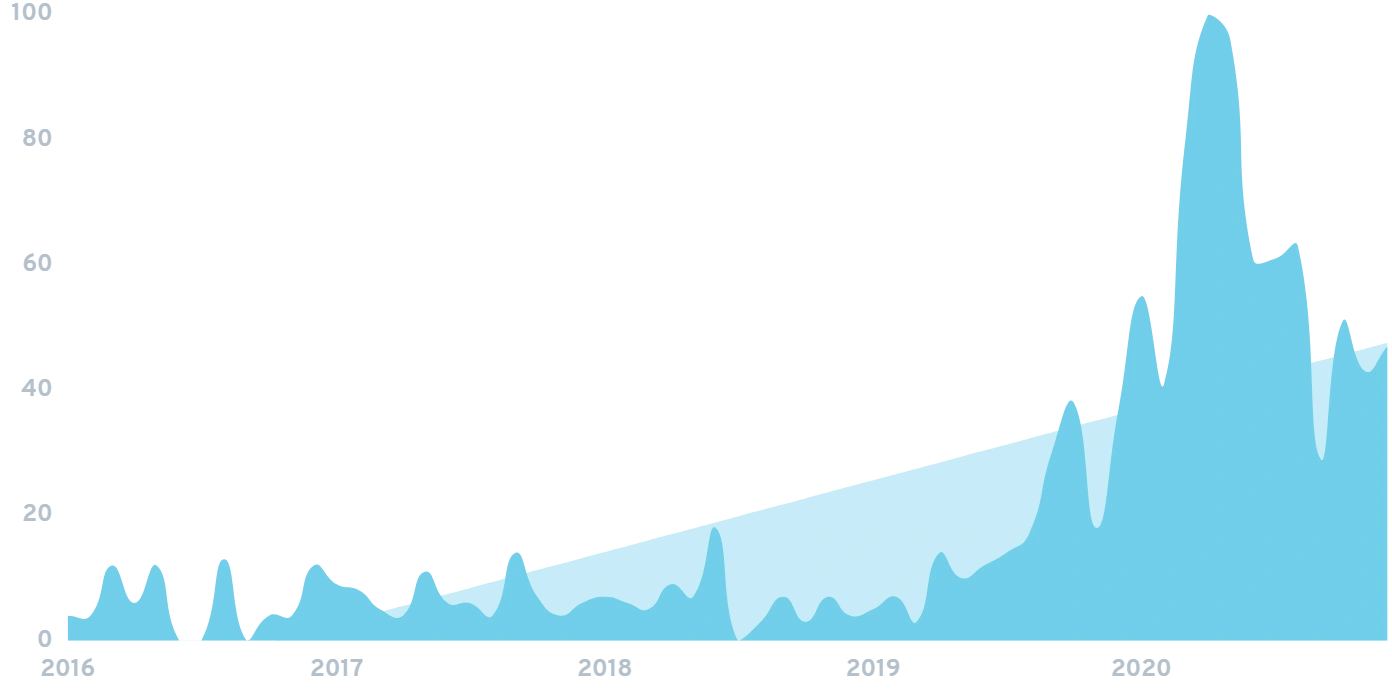
How to Come Up With Startup Ideas (In 10 Minutes)
In this post you’re going to learn exactly how to come up with ideas for your next startup.
Whether you want to launch a new SaaS business. Or a Shopify store.
This list of strategies will help you find new startup business ideas fast.
1. Check Out Products on Product Hunt
Product Hunt is a site where people vote on new products that just came out.
Product Hunt has become the go-to place for launching something new.
Which makes it super valuable for market research. And for figuring out what your next startup should be.
That’s because Product Hunt shows you products that are already working right now.
The only downside of Product Hunt is that they reset the products on the site every day. So if you only look at a few days of products here and there, you only get a snapshot of what’s working.
For example, a LinkedIn leads and sales booster was a recent Product Hunt product of the day.
"Products of the day" are helpful to look at. But it's important to view them as a snapshot of a single day.
Does that mean you should create a product that focuses on LinkedIn growth? Not necessarily. It’s just one random product that happened to do well that one day.
So to get the most out of Product Hunt, you need to lurk there every day. And over time you’ll get a feel for what types of products people want.
You can also keep an eye out for Product Hunt products that win “product of the week” or “product of the month” awards.
Products that win "product of the month" tend to represent categories with staying power.
These are products that got the most amount of upvotes over that time frame. Which shows they weren’t a one-day fluke.
2. Review Your Credit Card Statements
Your credit card statement is a goldmine of startup ideas.
Why? Because it shows you industries, categories and products that you spend money on.
For example, let’s say your statement looked like this:
Credit card statements show you industries that you know a lot about.
In this case, you spend quite a bit of money on healthy food (groceries and takeout). Which means that you deeply understand what products exist in that category. And why you buy certain products over others.
Which puts you in a great position if you decide to launch a product in that space.
3. Look For Ideas on Indie Hackers
Indie Hackers is a community of over 11k people that are all starting side-businesses.
The Indie Hackers entrepreneur community
Obviously, this is a great community for networking, inspiration and discussing marketing strategies.
But it’s also a resource that you can use to find ideas for your startup.
Specifically, you want to check out their “Products” section. This is a list of products that the Indie Hacker community is working on.
Indie Hackers has a sizeable database of new products, along with valuable data (like confirmed revenue numbers).
And you can even check out products that are in specific categories that you’re interested in (like analytics and marketing). Or products that already have revenue.
4. Look for popular software using BuiltWith
BuiltWith shows you software that different websites use.
BuiltWith scrapes millions of websites to figure out their underlying software stack.
This is designed to help you reverse engineer a competing site’s tech stack. But you can also use it to come up with startup ideas.
Specifically, you can check out their “Web Technology Usage Trends” list.
BuiltWith reports on web technology that's quickly trending up.
This list shows you popular software that lots of websites use. For example, “Shopify” is listed as the fastest-growing CMS. Which makes sense considering there are now over 1M Shopify stores worldwide.
And if you want to jump on the Shopify trend, you might want to launch a startup in that space. Or, if you’re ambitious, maybe even start a competitor.
That’s just one example. If you play around with BuiltWith for long enough, you’ll get a feel for technology that popular sites run on. And you can then either come up with products that complement that tech. Or launch something that directly competes with it.
Speaking of trending categories...
5. Find Trending Product Categories
Your startup will ultimately succeed or fail based on your product market fit, your team and your execution.
That said, launching a startup in an industry that’s trending up can significantly boost your odds of success.
You can easily find trending product categories in Google Trends.
For example, let’s say that you’re considering creating an app that helps people meditate. Well, you’d want to pop “meditation app” into Google Trends to see if interest is rising… or falling.
Google Trends can confirm if a topic or product is on the rise. Or falling fast.
The thing is, Google Trends is helpful if you already have a potential idea for your startup.
But what if you’re still brainstorming? Exploding Topics can be helpful in situations where you “don’t know what you don’t know”.
Exploding Topics is helpful for the brainstorming phase of product and market research.
For example, you can use the homepage to see a list of general topics that are trending up.
You can also check out trending topics in different categories, like beauty.
Specific categories can help you find trending topics in areas that you're interested in.
Either way, this approach will often unearth startup ideas that you’d be hard pressed to come up with on your own.
6. See Who You Follow on Social Media
This is an underrated way to come up with startup ideas.
With this approach, you’re focusing on the “who” vs the “what”.
For example, take a look at the people that you follow on Twitter.
Your Twitter followers can say a lot about the type of company that you want to start.
What do they have in common?
Are they traditional product people? Or modern-day growth hackers?
Do they compete with big brands? Or carve out tiny niches?
This exercise can help you figure out the type of company that you want to create. And once you have that approach, the product part is somewhat straightforward.
For example, Elon Musk knew that he wanted Tesla to be a company that sold "mass market electric vehicles".
But he wasn't 100% sure what that car would look like. Or the details of the path the get there. But that high-level goal helped Musk quickly figure out that the Tesla Roadster made sense as their first product.
As they say, the rest is history.
7. Review Amazon Movers and Shakers
Amazon’s Movers & Shakers is a regularly updated list of products across a ton of different categories, including appliances, books, electronics and more.
Amazon keeps an updated list their fastest-growing products.
Needless to say, this list is super valuable if you’re interested in selling a physical product.
For example, the top 3 trending products in the “Camera & Photo” category are things that you might not expect:
- Security camera
- Spy camera
- Otoscope for earwax removal
That’s really the point of this list: to reveal products and product categories that you don’t know about yet. Or, if you do know about them, didn’t know that they were trending up.
8. Search For Products In Google Shopping
Google Shopping can be super valuable if you already know the product you want to create. But you’re not sure about the details, like style, positioning, and pricing.
For example, let’s say you want to start an ecommerce site that sells surfboards.
Search for “surfboard” in Google Shopping. And you can see thousands of surfboards in Google’s product database.
Google Shopping helps you see what's already out there... at a glance.
9. Check out apps on the app store
Believe it or not but Apple’s App Store isn’t only useful for mobile app market research.
(Although it’s obviously extremely helpful if you want to make an app.)
That’s because the App Store gives you an idea of products that people are interested in.
In other words, an app is usually a “symptom” of a larger trend. A trend gets hot. Then, someone comes along to make an app that taps into that trend.
For example, one of the most popular apps right now is the “Ten Percent Happier” app.
The Ten Percent Happier mobile app grew quickly thanks to the best selling book of the same name.
Which tells you that meditation might be a growing trend (it is).
“SmartGym” is another example of a popular iPhone app.
Sure enough, interest in fitness and workout apps are growing super quickly.
Searches for "fitness apps" shot up in early to mid 2020.
Conclusion
Many new entrepreneurs struggle with coming up with an idea for their startup. It’s normal.
But with these actionable strategies, you should walk away with a number of promising startup ideas within a few minutes.
With that, it’s time to take action on what you just learned.
Stop Guessing, Start Growing 🚀
Use real-time topic data to create content that resonates and brings results.
Exploding Topics is owned by Semrush. Our mission is to provide accurate data and expert insights on emerging trends. Unless otherwise noted, this page’s content was written by either an employee or a paid contractor of Semrush Inc.
Share
Newsletter Signup
By clicking “Subscribe” you agree to Semrush Privacy Policy and consent to Semrush using your contact data for newsletter purposes
Written By


Josh is the Co-Founder and CTO of Exploding Topics. Josh has led Exploding Topics product development from the first line of co... Read more

